Note4Students
From UPSC perspective, the following things are important :
Prelims level: Not much.
Mains level: Paper 2- Need of the policy and standard guidelines for the drug recall.
Context
A few days ago, 12 children died in Udhampur district of Jammu due to poisoned cough syrup (Coldbest-PC).
Fourth mass glycol poisoning
- What was the cause of the poisoning? A team of doctors at the Post Graduate Institute of Medical Education & Research, Chandigarh, attributed the deaths to the presence of diethylene glycol in the cough syrup.
- What is Diethylene glycol? It is an anti-freezing agent that causes acute renal failure in the human body followed by paralysis, breathing difficulties and ultimately death.
- This is the fourth mass glycol poisoning event in India that has been caused due to a pharmaceutical drug.
Measures required and example from the US
- Preventing further deaths: The immediate concern for doctors, pharmacists and the drug regulators should be to prevent any more deaths.
- The only way to do so is to account for each and every bottle of the poisoned syrup that has ever been sold in the Indian market and stop patients from consuming this drug any further.
- The US example in such case: United States Food and Drug Administration (USFDA), in 1937, when the United States faced a similar situation with glycol poisoning.
- Tracking down every bottle: Entire field force of inspectors and chemists were assigned to the task of tracking down every single bottle of the drug.
- Even if a patient claimed to have thrown out the bottle, the investigators scoured the street until they found the discarded bottle.
- This effort was accompanied by a publicity blitz over radio and television.
- What is being done in India? We do not see such public health measures being undertaken here.
- Seriousness not communicated to the pubic: Authorities are simply not communicating the seriousness of the issue to the general public.
- A general statement: At most, the authorities in Himachal Pradesh (H.P.), who are responsible for oversight of the manufacturer of this syrup, have made general statements that they have ordered the withdrawal of the drug from all the other States where it was marketed.
- Lack of transparency: There is no transparency in the recall process and information about recalls and batch numbers is not being communicated through authoritative channels.
- No public announcement by the DCGI: There is no public announcement by the Drug Controller General of India (DCGI), which is responsible for overall regulation of the entire Indian market.
- The suspect product, although manufactured in H.P., has been sold across the country.
- The website of the DCGI, which is supposed to communicate drug alerts and product recalls, has no mention of Coldbest-PC as being dangerous as of this writing.
Need for the recall policy
- No rules or binding guidelines on recall: One of the key reasons why the DCGI and state drug authorities have been so sloppy is because unlike other countries, India has not notified any binding guidelines or rules on recalling dangerous drugs from the market.
- Warnings to the DGCI on lack of framework: The 59th report of the Parliamentary Standing Committee on Health as well as the World Health Organization (in its national regulatory assessment) had warned the DCGI on the lack of a national recall framework in India.
- A set of recall guidelines was drafted in 2012 but never notified into law.
Conclusion
The drug regulator needs to take the urgent steps to avoid the repeat of such tragedies in the future and formulate a policy on the drug recall at the earliest.
Get an IAS/IPS ranker as your 1: 1 personal mentor for UPSC 2024
Attend Now
Note4Students
From UPSC perspective, the following things are important :
Prelims level: Not much.
Mains level: Paper 2- Issues in the SAARC, India need to move sub-regional grouping to increase the intra-regional trade.
Context
Former Sri Lankan Prime Minister Ranil Wickremesinghe’s push for regional economic integration and for India-Pakistan dialogue should be studied carefully by New Delhi.
What are the issues with SAARC?
- Recent moves by India: India has more or less shut down all conversations on the South Asian Association for Regional Cooperation (SAARC).
- India also walked away from the ASEAN-led Regional Comprehensive Economic Partnership (RCEP).
- Mr Wickremesinghe set out a number of suggestions:
- The original purpose of SAARC-Regional growth: India-Pakistan tensions have brought economic integration within the SAARC region to a “standstill”.
- That the original purpose of the South Asian group was to build a platform where bilateral issues could be set aside in the interest of regional growth.
- Start at the sub-grouping levels: To engender more intra-regional trade, an even smaller sub-grouping of four countries with complementary economies: India, Sri Lanka, Bangladesh and Thailand, can start the process of reducing tariffs and demolishing non-tariff barrier regimes.
- When it comes to the intra-regional share of total trade, SAARC and BIMSTEC languish behind groupings such as ASEAN, EU and MERCOSUR.
- Economic Integration Road Map: The Sri Lankan leader also suggested that with India’s leadership, a more integrated South Asian region would be better equipped to negotiate for better terms with RCEP so as not to be cut out of the “productivity network” in Asia, and envisioned an Economic Integration Road Map to speed up the process.
Governments stand
- Talks with Pakistan off the table: The government has made it clear that talks with Pakistan are strictly off the table, and that a SAARC summit, which has not been held since 2014, is unlikely to be convened anytime soon.
- More reliance on bilateral deals: The government, which has taken a protectionist turn on multilateral trade pacts, is relying more on direct bilateral deals with countries rather than overarching ones that might expose Indian markets to flooding by Chinese goods.
- India’s trade deficit with the neighbours: For any regional sub-grouping in South Asia to flourish, it is India that will have to make the most concessions given the vast trade deficits India’s neighbours have at present, which it may not wish to do.
Conclusion
- The overall projection that India’s global reach will be severely constrained unless it is integrated with its neighbours, and tensions with Pakistan are resolved, cannot be refuted. India needs to be more accommodative for the realisation of its ambitions.
Get an IAS/IPS ranker as your 1: 1 personal mentor for UPSC 2024
Attend Now
Note4Students
From UPSC perspective, the following things are important :
Prelims level: Not much.
Mains level: Paper 2- What India can learn from China's dealing with the coronavirus outbreak?
Context
China’s handling of coronavirus, in contrast to SARS, has been effective, should be a template for others.
Why lockdown of Wuhan is a big deal?
- A move without precedent: China’s lockdown of roughly 60 million people in Wuhan and other cities in Hubei province for more than a month now is without precedent in the history of public health.
- Best way to stop the virus from spreading: The best way to stop a virus from spreading from person to person, is to give it no place to spread to.
- This is achieved by isolating those who are infected and quarantining those who might be infected.
- Cordon sanitaire: In China, though, the control has moved beyond traditional quarantine to a cordon sanitaire-an exclusion zone people cannot travel into or get out of.
- In most countries, this simply would not work for a period this long and a population that large.
- Inconceivable move in other places: Wuhan is a city of 11 million people, slightly larger than Chennai or Bengaluru. It would be inconceivable to think of cutting off transportation in and out of these cities or asking people to stay at home for even a day, let alone a month.
- No political control nor administrative mechanism: Like India, most countries in the world have neither the political control to impose their will on people this way nor the administrative mechanism to enforce this degree of control.
Human cost and ethic of the lockdown
- The human cost: The human cost of such a strategy is immense.
- Feeling of being unable to escape: The fear induced by being unable to escape from a place where a new virus is circulating is immense.
- The worries and stresses of everyday life multiply one hundred-fold when everything from shopping for food to occupying children stuck at home becomes a challenge.
- The slightest cough, cold or fever can trigger panic.
- Ethics involved in the move: The ethics of the cordon sanitaire in Wuhan, as well as the quarantining by Japanese authorities of the cruise ship Diamond Princess, will be debated for years after this particular outbreak is over.
- Slowing the spread: But whatever its human and financial cost, China’s actions in the first month of the outbreak helped to slow the spread of the virus within the country as well as internationally.
How China’s response this time is different from the SARS
- On December 31, the Chinese government informed the WHO, and the world, of the existence of a form of pneumonia of unknown cause
- It also told the people of Wuhan to wear masks if they had symptoms and seek medical attention.
- Virus identification: For the world, the big breakthrough from China came on January 7, when researchers in Wuhan identified the virus as a new coronavirus.
- Sharing of the genetic sequence of the virus: Two days later, China shared its genetic sequence with the world.
- How genetic sequence helped? The sharing of the genetic sequence allowed labs all over the world to develop testing kits to detect the disease.
- It also put countries on the alert for travellers with the disease, without which the new coronavirus would have spread much quicker and farther than it has so far.
- China’s response to SARS: The Chinese response to SARS in 2003, in contrast to this, was a cover-up.
- The disease circulated for nearly three months, enabled by government secrecy and censorship.
- Spread of disease without warning: When travellers from China brought the disease first to Hong Kong and from there to other cities across the globe, there was no warning.
- It was only after the disease spread in Hong Kong, that scientists and public health experts began to decipher this new virus.
- Lessons learned: China, fortunately, learned the lessons for SARS and put together systems to identify and respond to this new disease quickly.
What India can learn from China
- Infrastructure with speed: Public health officials all over the world, including in India, should study the speed with which China put together an infrastructure to deal with this new disease.
- Modern, well-equipped hospitals dedicated to coronavirus patients were constructed in weeks.
- Centralised information and logistic system: Centralised information and logistics systems and systems to ensure coordination between multiple levels of government -from the central government to provincial and municipal governments, were put into place.
- All the systems seem to have worked reasonably smoothly, given the chaotic and complex atmosphere of a disease outbreak.
- Unique approach: The way China has tackled this disease has been an “all of government, all of the society approach”, in the words of Bruce Aylward, the leader of the WHO team that recently spent two weeks in the country.
- It was, as he described it, “a very old-fashioned approach”, but one that had “prevented at least tens of thousands, but probably hundreds of thousands of cases.”
Conclusion
- In all probability, it is only a matter of time before India sees new cases. The Indian health system, as in China, is multi-layered. Some states like Kerala have strong public health infrastructure and a strong response capability. Many other states like Uttar Pradesh and Bihar do not have strong public health systems. They will find it difficult to respond and will learn that diseases, like the revolution, can be brutal.
Get an IAS/IPS ranker as your 1: 1 personal mentor for UPSC 2024
Attend Now
Note4Students
From UPSC perspective, the following things are important :
Prelims level: Marine Heatwave
Mains level: Read the attached story
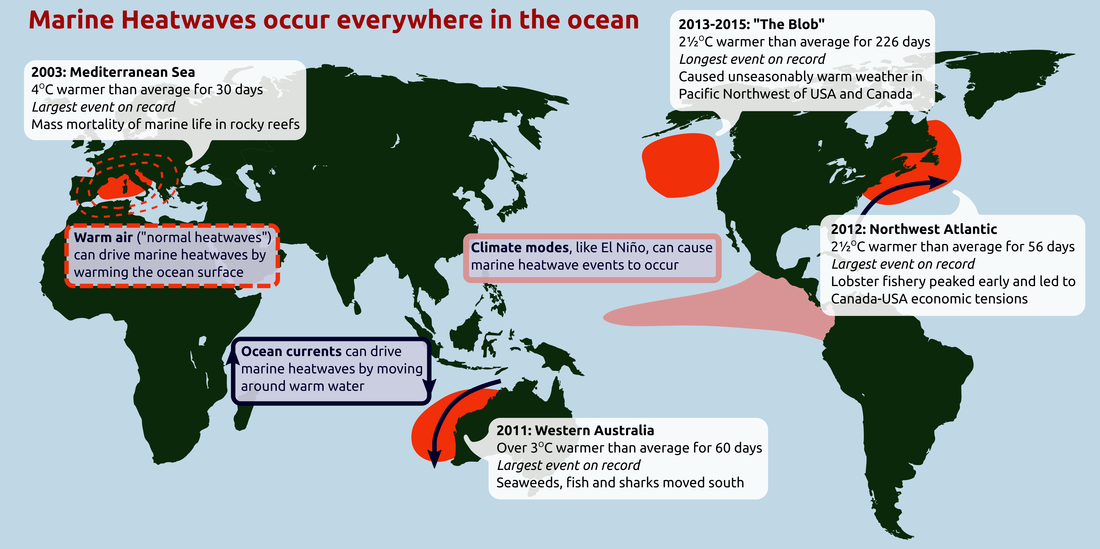
Scientists have observed unusually high sea surface temperatures (SSTs) in the Pacific Ocean around the western coast of the United States. This marine heatwave (MHW), covering an area of roughly 6.5 million square kilometres, can affect marine life and lead to droughts in the surrounding regions.
What are MHWs?
- We know that heatwaves occur in the atmosphere. We are all familiar with these extended periods of excessively hot weather.
- However, heatwaves can also occur in the ocean and these are known as marine heatwaves, or MHWs.
- These marine heatwaves, when ocean temperatures are extremely warm for an extended period of time can have significant impacts on marine ecosystems and industries.
When do they occur?
- Heatwaves can happen in summer and also in winter, where they are known as “winter warm-spells”.
- These winter events can have important impacts, such as in the southeast of Australia where the spiny sea urchin can only colonize further south when winter temperatures are above 12 °C.
What causes marine heatwaves?
- Marine heatwaves can be caused by a whole range of factors, and not all factors are important for each event.
- The most common drivers of marine heatwaves include ocean currents which can build up areas of warm water and air-sea heat flux, or warming through the ocean surface from the atmosphere.
- Winds can enhance or suppress the warming in a marine heatwave, and climate modes like El Niño can change the likelihood of events occurring in certain regions.
- MHWs can be caused due to large-scale drivers of the Earth’s climate like the El Niño Southern Oscillation (ENSO).
Impacts of the MHWs
- Marine heatwaves affect ecosystem structure, by supporting certain species and suppressing others.
- For example, after the 2011 marine heatwave in Western Australia the fish communities had a much more “tropical” nature than previously and switched from kelp forests to seaweed turfs.
- Marine heatwaves can cause economic losses through impacts on fisheries and aquaculture.
- Temperature-sensitive species such as corals are especially vulnerable to MHWs. In 2016, marine heatwaves across northern Australia led to severe bleaching of the Great Barrier Reef.
How do we measure marine heatwaves?
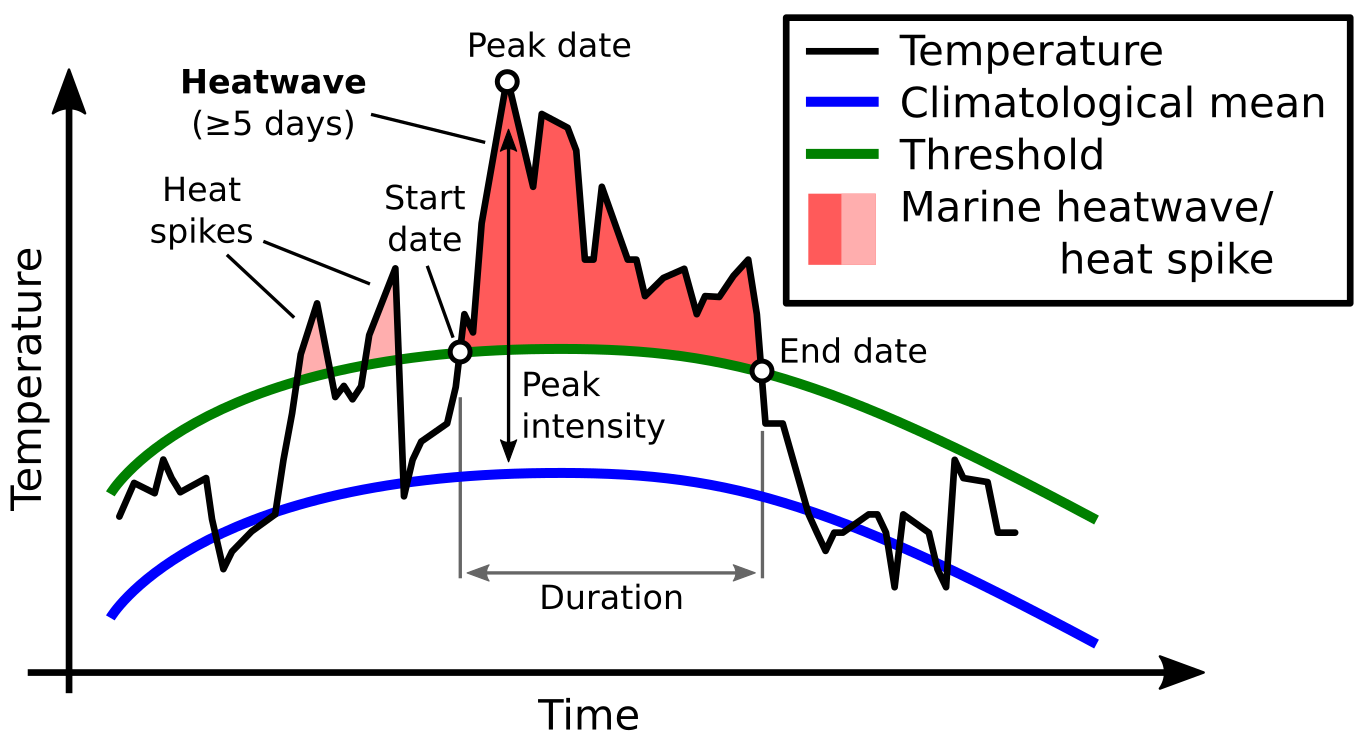
- A marine heatwave occurs when seawater temperatures exceed a seasonally-varying threshold (usually the 90th percentile) for at least 5 consecutive days.
- Successive heatwaves with gaps of 2 days or less are considered part of the same event.
Why study MHWs?
- MHWs are increasing in frequency due to climate change. MHWs increased by 54 per cent in the last 30 years.
- Despite their potential impact on the health of marine ecosystems, MHWs remain one of the least studied consequences of global warming.
Way Forward
- Marine heatwaves clearly have the potential to devastate marine ecosystems and cause economic losses in fisheries, aquaculture, and ecotourism industries.
- However, their effects are often hidden from view under the waves until it is too late.
- By raising general awareness of these phenomena, and by improving our scientific understanding of their physical properties and ecological impacts, we can better predict future conditions and protect vulnerable marine habitats and resources.
Get an IAS/IPS ranker as your 1: 1 personal mentor for UPSC 2024
Attend Now
Note4Students
From UPSC perspective, the following things are important :
Prelims level: Locusts invasion
Mains level: Locusts invasion and its threats
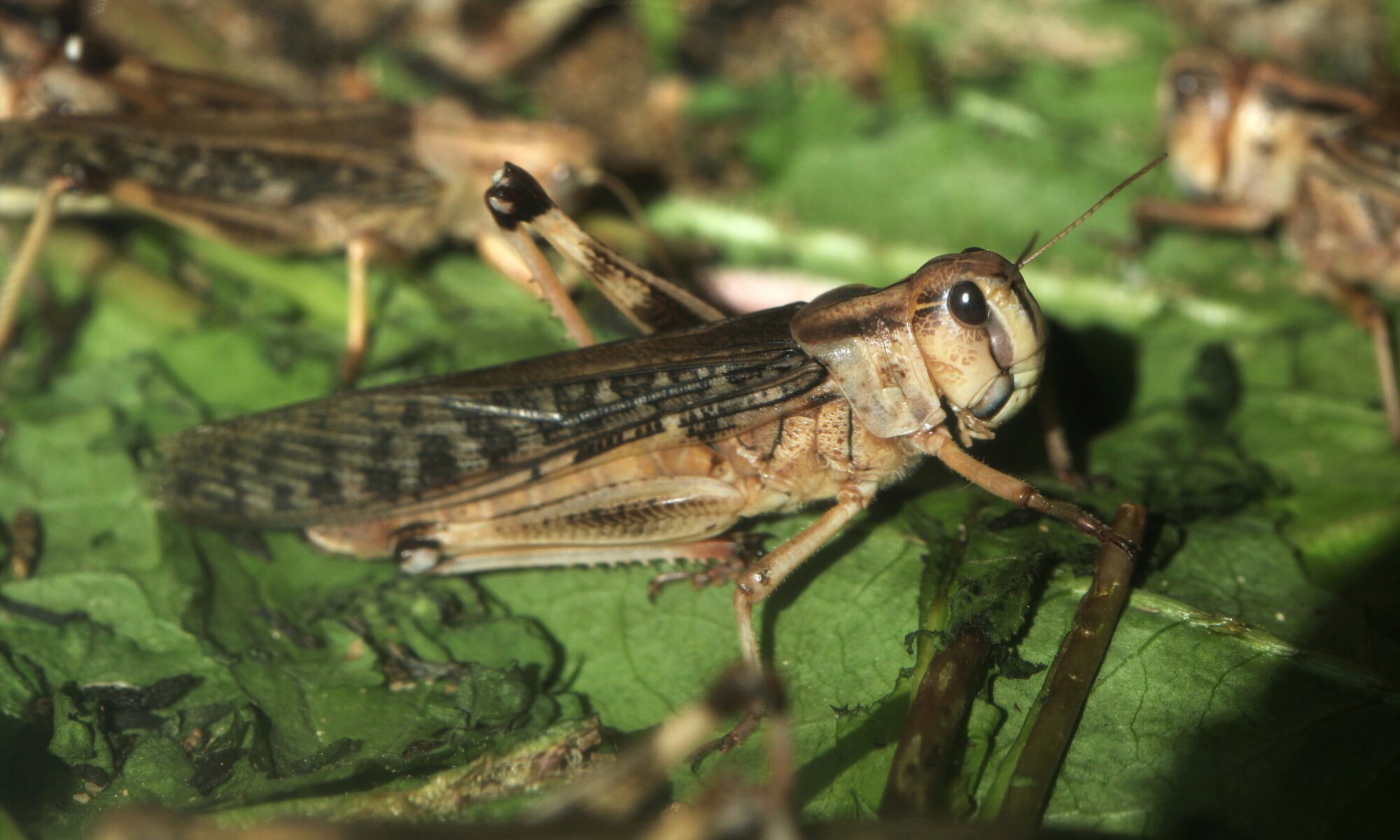
The locust, a short-horned, desert grasshopper that attacks standing crops and green vegetation, has been making news in India since May-June 2019 when it appeared in Rajasthan and Gujarat. In Kharif season last year, it was also seen in a few areas along Punjab’s border with Rajasthan.
Context
- The Locust Warning Organisation (LWO) has been taking measures to control attacks by the pest for the past eight decades in the country.
- Despite all of LWO’s efforts, the chain of periodic locust attacks in India is yet to be broken.
Why Locusts attacks are deadly?
- Adult locust swarms can fly up to 150 km (93 miles) a day with the wind and adult insects can consume roughly their own weight in fresh food per day.
- A very small swarm eats as much in one day as about 35,000 people.
- If allowed to breed unchecked in favourable conditions, locusts can form huge swarms that can strip trees and crops over vast areas.
About LWO
- In India, the scheme Locust Control and Research (LC&R) is responsible for control of Desert Locust.
- It is being implemented through Organisation known as “Locust Warning Organisation (LWO)” established in 1939 and later amalgamated with the Directorate of Plant Protection Quarantine and Storage in 1946.
- Locust Warning organization (LWO) is responsible to monitor and control the locust situation in Scheduled Desert Area (SDA) mainly in the States of Rajasthan and Gujarat while partly in the States of Punjab and Haryana.
- It keeps itself abreast with the prevailing locust situation at National and International level through monthly Desert Locust Bulletins of FAO.
What measures are being taken by the LWO to control locust breeding/attacks in India?
- Experts at the LWO said around three dozen offices including 10 circle offices are working on this issue.
- They have been doing regular field surveys to keeping a close and regular watch on an over two lakh sq. km area (nearly 11,500 villages) of three states including 1.79 lakh sq. km in Rajasthan (52 per cent of the state’s total area), and the remaining in Gujarat and Haryana.
- To observe the locust, intensive surveys are conducted by walking along the wind direction and driving at low speed to count flying locusts.
How often have there been locust attacks in India?
- The pests have been appearing periodically after a gap of 2-3 or 5-7 years. Around 26 locust attacks have taken place in India in two major cycles.
- After independence (1947), 25 attacks were observed. Among these, the attacks of 1949-55, 1962 and 1993 were most devastating when 167 and 172 swarms were noticed in 1962 and 1993 respectively.
- Since 1993, locust attacks have occurred less frequently. The latest attack of 2019-20, has had quite a severe effect on crops in Rajasthan.
Financial losses incurred
- According to LWO, to date, the financial loss due to locusts is said to be Rs 50 lakh, Rs 2 lakh and Rs 7.18 lakh in 1962, 1978 and 1993 respectively.
- A loss of Rs 2 crore was incurred in 1940-46 and 1949-55. Before the LWO was formed, a loss of Rs 10 crore is estimated in the 1926-31 cycle.
Why has the chain not been broken even after 80 years?
- LWO experts said it is because there are 30 countries in four regions of different continents that have an arid climate with large deserts that provide an ideal breeding ground for the locust.
- Most of the time, locusts are coming to India from Pakistan, or from the Middle East via Pakistan.
- There are four commissions for these 30 countries which include Iran, Pakistan, Afghanistan and India.
- Laxity by any country would lead to its spread in all these countries which they invade one after another by following almost the same path.
- The swarms which are coming to India (Rajasthan) have been following the same path, starting from central or western region and then Pakistan mostly in summers.
- Apart from breaking the chain of summer attacks, the winter swarm has now posed another challenge.
Where did the current locust attack originate?
- The locust breeds in high temperatures and high humidity, which is prevalent in areas around the Red Sea.
- The current attack in India, which started in 2019, has its origin in Yemen, where there was internal conflict and civil war.
- When the locust was breeding in heavy numbers there in 2018-19, the country could not take care due to its attention towards the civil war and lack of resources to control it.
- The insect went out of control, took the route of Saudi Arabia, Iran, Pakistan, Somalia, Ethiopia and other countries located on both sides of the Red Sea where they multiplied rapidly.
Control measures
- The chain can be broken only when the pest is killed at the time of breeding or before migration to another country.
- Farmers used to try to drive away the locusts by lighting fires. They also dug up the eggs.
- Now crops can be sprayed with insecticides from vehicles or airplanes.
- Scientists are trying to improve the control of locusts, by preventing or dispersing swarms.
Also read:
Massive locust invasion threatens Gujarat farmers
Get an IAS/IPS ranker as your 1: 1 personal mentor for UPSC 2024
Attend Now
Note4Students
From UPSC perspective, the following things are important :
Prelims level: Spectroscopy, Raman Effect
Mains level: Applications of Raman Effect

Yesterday, February 28th was celebrated as National Science Day. In 1986, the Govt. of India designated this Day, to commemorate the announcement of the discovery of the “Raman effect”.
CV Raman
- Raman conducted his Nobel-prize winning research at IACS, Calcutta.
- While he was educated entirely in India, Raman travelled to London for the first time in 1921, where his reputation in the study of optics and acoustics was known to physicists such as JJ Thomson and Lord Rutherford.
- The Raman Effect won scientist Sir CV Raman the Nobel Prize for physics in 1930.
- It was also designated as an International Historic Chemical Landmark jointly by the American Chemical Society (ACS) and the Indian Association for the Cultivation of Science (IACS).
- His speciality was the study of vibrations and sounds of stringed instruments such as the Indian veena and tambura, and Indian percussion instruments such as the tabla and mridangam.
The Raman Effect
- In 1928, Raman discovered that when a stream of light passes through a liquid, a fraction of the light scattered by the liquid is of a different colour.
- While Raman was returning from London in a 15-day voyage, he started thinking about the colour of the deep blue Mediterranean.
- He wasn’t convinced by the explanation that the colour of the sea was blue due to the reflection of the sky.
- As the ship docked in Bombay, he sent a letter to the editor of the journal Nature, in which he penned down his thoughts on this.
- Subsequently, Raman was able to show that the blue colour of the water was due to the scattering of the sunlight by water molecules.
- By this time he was obsessed with the phenomenon of light scattering.
Observing the effect
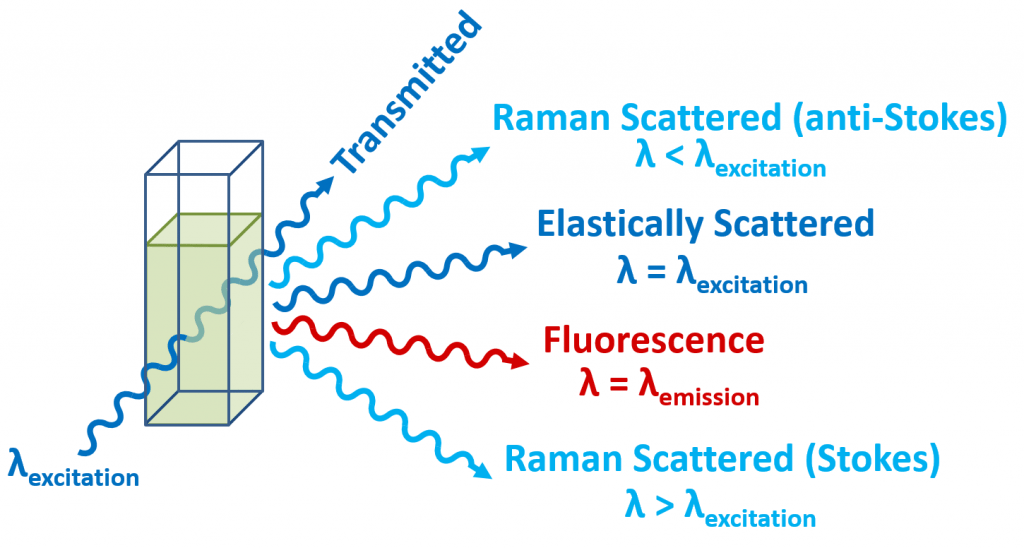
- The Raman Effect is when the change in the energy of the light is affected by the vibrations of the molecule or material under observation, leading to a change in its wavelength.
- Significantly, it notes that the Raman effect is “very weak” — this is because when the object in question is small (smaller than a few nanometres), the light will pass through it undisturbed.
- But a few times in a billion, light waves may interact with the particle. This could also explain why it was not discovered before.
- In general, when light interacts with an object, it can either be reflected, refracted or transmitted.
- One of the things that scientists look at when light is scattered is if the particle it interacts with is able to change its energy.
Applications
- Raman spectroscopy is used in many varied fields – in fact, any application where non-destructive, microscopic, chemical analysis and imaging is required.
- Whether the goal is qualitative or quantitative data, Raman analysis can provide key information easily and quickly.
- It can be used to rapidly characterize the chemical composition and structure of a sample, whether solid, liquid, gas, gel, slurry or powder.
Get an IAS/IPS ranker as your 1: 1 personal mentor for UPSC 2024
Attend Now
Note4Students
From UPSC perspective, the following things are important :
Prelims level: Red snow , How it occurs
Mains level: Impact of climate change on Antarctica

Over the last few weeks, photographs of “red snow” off the coast of Antarctica’s northernmost peninsula, have gone viral. “Red snow” or “watermelon” is a phenomenon that has been known since ancient times. Now, it raises concerns about climate change.
Red snow in Antarctica: Why it happens
- Aristotle is believed to be one of the first to give a written account of red snow, over 2,000 years ago.
- What Aristotle described as worms and grub, the scientific world today calls algae.
- This alga species, Chlamydomonas Chlamydomonas nivalis, exists in the snow in the polar and glacial regions and carries a red pigment to keep itself warm.
Signs of faster melting
- In turn, the red snow causes the surrounding ice to melt faster. The more the algae packed together, the redder the snow.
- And the darker the tinge, the more the heat absorbed by the snow. Subsequently, the ice melts faster.
- While the melt is good for the microbes that need the liquid water to survive and thrive, it’s bad for glaciers that are already melting from a myriad of other causes, the study said.
- These algae change the snow’s albedo — which refers to the amount of light or radiation the snow surface is able to reflect back. Changes in albedo lead to more melting.
Get an IAS/IPS ranker as your 1: 1 personal mentor for UPSC 2024
Attend Now
Note4Students
From UPSC perspective, the following things are important :
Prelims level: Doomsday Vault
Mains level: Not Much
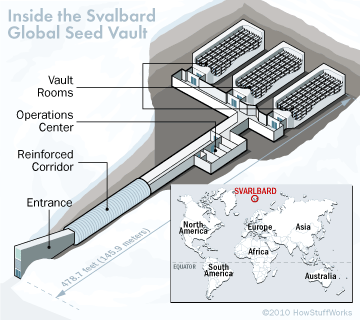
The Svalbard Global Seed Vault — referred to as the earth’s ‘doomsday vault’ — now contains about 1.05 million seeds.
Global Seed Vault
- The vault — in the island of Spitsbergen, midway between Norway and the North Pole — opened in 2008 and preserves seeds for several food varieties.
- The aim of the vault is to preserve a vast variety of crop seeds in the case of a doomsday event, calamity, climate change or national emergency.
- The vault is artificially cooled at temperatures of minus 18 degrees Celsius.
- The low temperature and limited access to oxygen will ensure low metabolic activity and delay seed ageing.
- The permafrost surrounding the facility will help maintain the low temperature of the seeds if the electricity supply fails.
Access to seeds
- Vault seed samples are copies of samples stored in the depositing genebanks.
- Researchers, plant breeders, and other groups wishing to access seed samples cannot do so through the seed vault; they must instead request samples from the depositing genebanks.
- The samples stored in the genebanks will, in most cases, be accessible in accordance with the terms and conditions of the International Treaty on Plant Genetic Resources for Food and Agriculture, approved by 118 countries or parties.
Get an IAS/IPS ranker as your 1: 1 personal mentor for UPSC 2024
Attend Now







